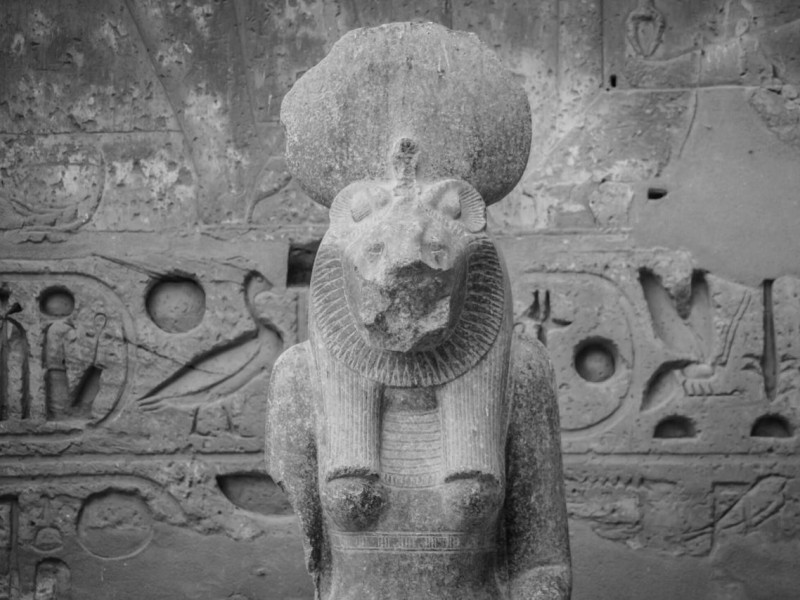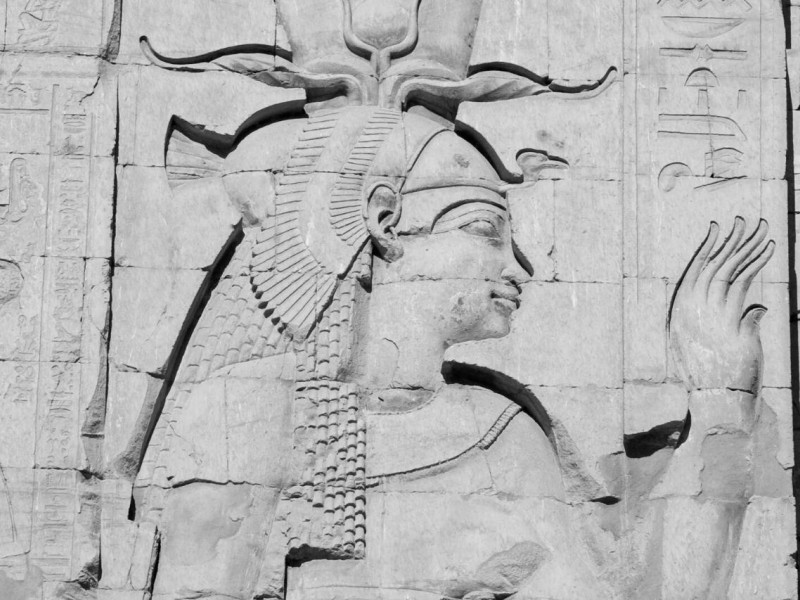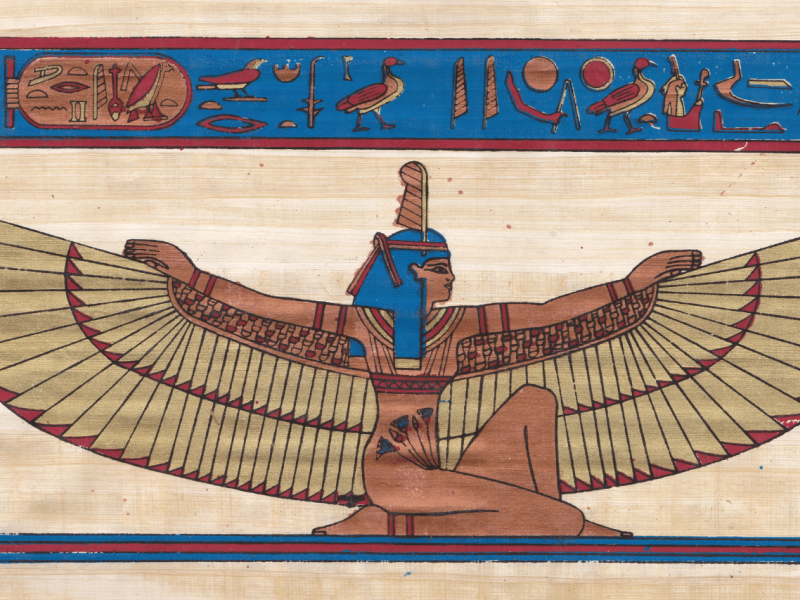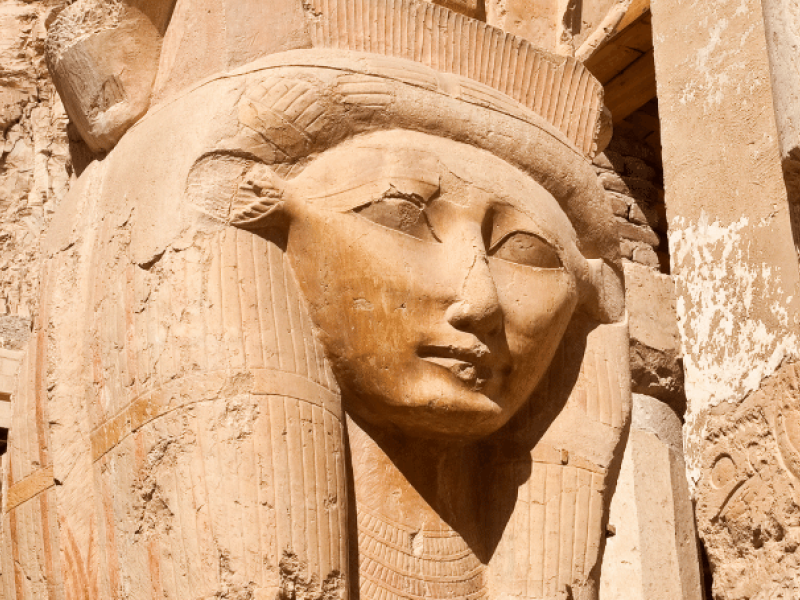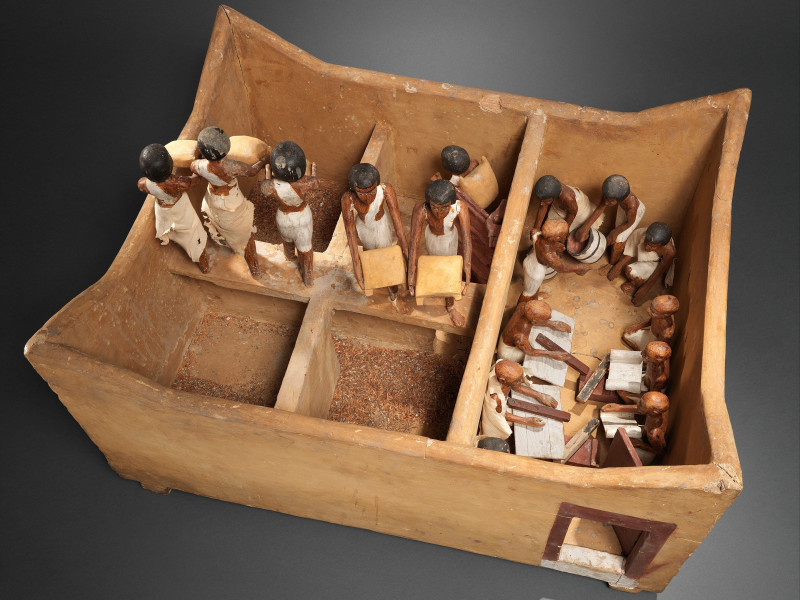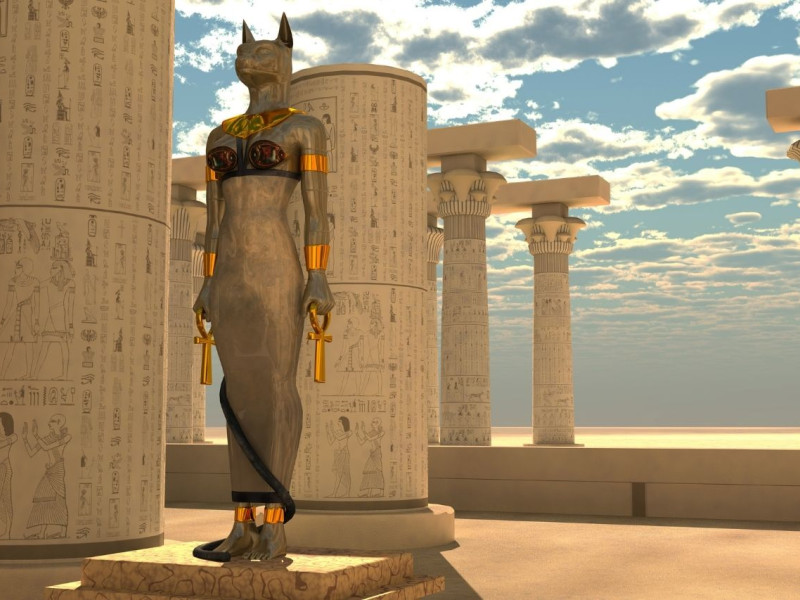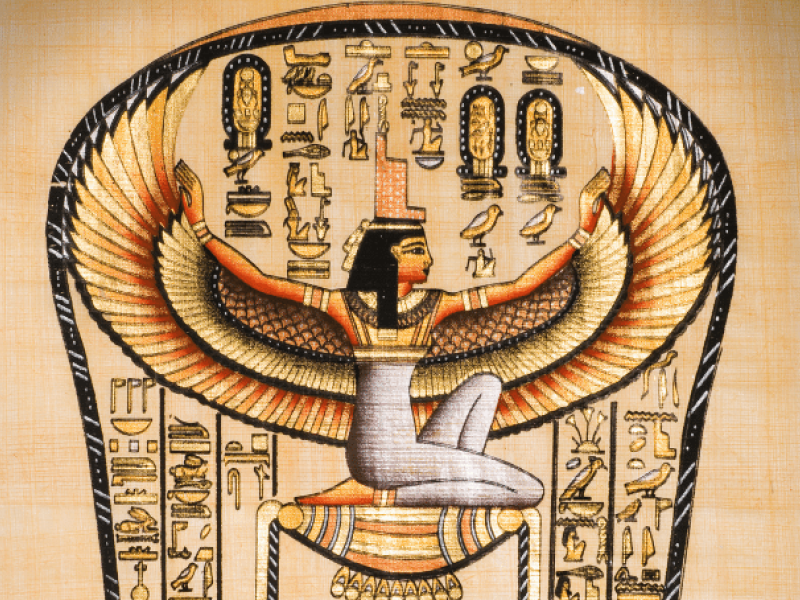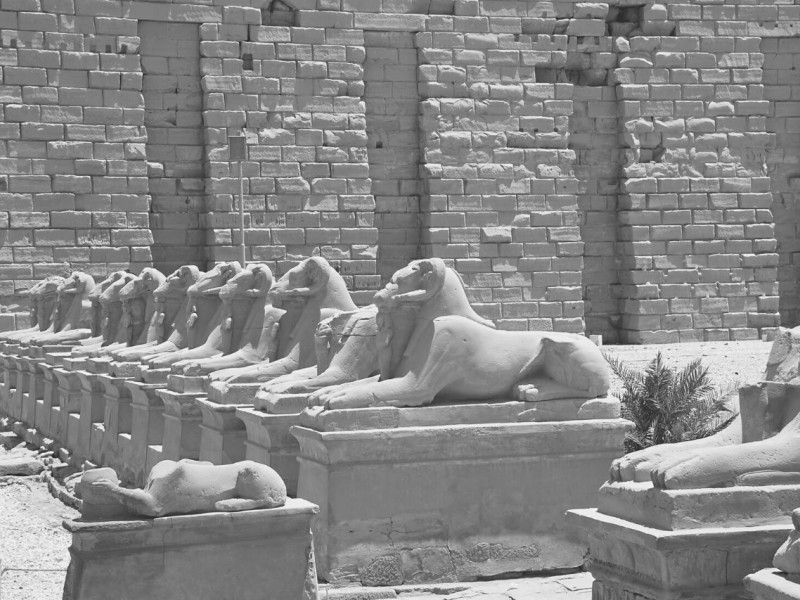Seshat: The Deity Whose Presence Was Felt in Major Egyptian Temples
Seshat, sometimes spelled Seshet, was the female divine writer who oversaw writing, arithmetic and wisdom in ancient Egypt. Her duties also included helping the king to perform some rituals before major construction work was started.
The Egyptians depicted the goddess Seshat in a leopard dress with a star hovering over her head.
Keep reading to find out more about this Egyptian goddess of wisdom.
Who Is Seshat in Egyptian Mythology?
Seshat is the goddess of writing who was also responsible for accounting, astronomy, astrology and knowledge. The ancient Egyptians gave her the title Mistress of the House of Books due to her association with the priests who were in charge of storing literary works.
Seshat, in ancient Egyptian, meant female scribe, thus her name accurately matched her role. The ancient Egyptians believed it was Seshat who first invented writing and taught it to mankind.
The Origins of Seshat
According to the story of Seshat, she was part of the deities who ruled Egypt even before the Old Kingdom was established. Records of the goddess date back to the 2nd Dynasty, which was the first time she appeared. She had no cult centers or temples as we will soon discover.
According to scholars, Seshat was viewed as a primeval deity who kept records since the inception of time. During the era of the Old Kingdom, Seshat was associated with the pharaohs and royalty.
Seshat and Thoth
The relationship between Seshat and Thoth, the god of wisdom, was an interesting one. In some myths, Seshat was depicted as Thoth’s child, while other myths portrayed Thoth as her husband. Regardless of whatever relationship existed between the two, one thing was for certain: Thoth and Seshat shared similar roles as both deities were patrons of writing and wisdom.
Thoth and Seshat shared the duties of marking the pharaoh’s life expectancy. According to some myths, the two deities decided the number of years allocated to each individual at birth. They then scribbled the individual’s fate on bricks upon which mothers squat to give birth.
Some ancient Egyptians believed that Thoth was the inventor of writing, a role he shared with Seshat. This is why the goddess Seshat was often linked to Thoth, either as her husband or father.
A scene discovered in a temple in the ancient Egyptian city of Edfu depicts Ptolemy X offering a scribal palette to Thoth and Seshat. The interpretation was that the King was thanking the two deities for inventing writing.
Seshat and Maat
Maat, who was the goddess of order and uprightness, was also often associated with Seshat. However, this association did not exist until a later time. Due to Maat’s relationship with Thoth, the Egyptians viewed Seshat as the daughter of Maat.
Others also believed that Seshat’s appetite for orderliness was derived from Maat. Thus, they came to the conclusion that Seshat was an offspring of Maat.
Depictions of Seshat
As you’ve already read, Seshat was depicted wearing the skin of a leopard. Other depictions showed her in panther skin with a tail that reached her feet. On her head was a red headband and above her stood a green star. Hovering over the star was a green bow.
As typical of ancient Egyptian gods, Seshat had an aegis around her neck. She wore a red band around her waist and had leopard claws around her sleeves. Her skin was painted gold and her hair a deep blue color. Seshat held a stylus in one hand and a palm stem with notches in the other.
Other images show Seshat holding different tools like the strings used in surveying land and buildings. Her archaic depictions indicated five petals in place of the star and bow above her head. The various symbols in the image of Seshat had their distinct meanings.
The Meanings of Her Symbols
The skin of the leopard Seshat wore was thought to represent her strength, bravery and victory over danger. It was commonplace for heroes in Egyptian mythology to wear the skin of an animal they just conquered. Also, leopards were known in Egypt as dangerous creatures, so Seshat’s wearing of the leopard skin indicated her fearless nature.
The leopard skin also represented priests that conducted funerals. The spots on the leopard skin represented the stars in the sky, while the red headband around her head signified her authority and power as a deity. The star on top of the goddess had seven points, which was a symbol of perfection.
The notched palm in her hand represented time, with the notches marking the years of time. It also marked the number of years in the lifespan of the pharaoh. The crescent above the star was a symbol of her status as an important deity in the Egyptian pantheon. The cords used for surveying held by the deity were reflective of her role as a chord stretcher.
The Roles of Seshat
Seshat had some of the most important roles in ancient Egypt, which made her worship even more popular. These included recordkeeping, mathematics, watching over the library and writing the speeches of the pharaoh.
These roles earned her titles such as Mistress of the House of Books, Keeper of the House of Life, Friend of the Dead and Mistress of Builders. Seshat’s role was extensive and it permeated the roles of other deities.
The Stretcher of the Cords
As already mentioned above, the stretching of the cord was a ceremony or ritual performed before a building was constructed. The cord was knotted to help in demarcating and aligning the building so it would be precise and accurate. Seshat’s priestess and the pharaoh officiated this ritual in the name of the goddess, each holding a golden mallet.
This ritual had three stages, which were:
Stage One: Demarcating the Four Corners of the Building
This was done with the help of the stars to ensure accurate measurement. In the building of the pyramids, the ancient Egyptians aligned their edifices to the north.
Stage Two: Stretching the Cord
The idea was to measure the building’s various dimensions and align them to the stars. To do this, the masons drove sticks into the four corners that had earlier been demarcated. They then linked these stakes by using knotted cords.
Stage Three: Loosening the Cord
The final phase was the loosening of the cord, which was done to show the boundaries of the building.
The masons of ancient Egypt were extremely accurate at measuring and aligning their buildings. They achieved this by using the merkhet, which helped to calculate true north. They believed that their ability to achieve all these precise calculations was due to Seshat’s divine guidance. At the ceremony of the stretching of the cord, the priestess of Seshat supervised the staff of other priestesses who had undergone training in mathematics.
The Surveyor of the Land
Seshat was also responsible for surveying and resetting the boundaries of the land after the yearly floods. This was when the Nile overflowed its banks and flooded the areas around it. The Egyptians thought that the annual floods were caused by the tears of Isis as she mourned her husband, Osiris.
Seshat and the Pharaohs
Seshat was the deity responsible for the life of the Pharaohs. She wrote the number of years the king would spend on earth and marked the time of each king. It was believed that the deity wrote the speeches of the king during the king’s coronation. The goddess also aided the pharaoh during the stretching of the cord ritual.
Seshat was also involved in the Sed festival, which commemorated the continuous rule of the king. It was celebrated after the Pharaoh had ruled the land for 30 years and marked every three years later. During the festival, Seshat’s priestess held the palm with notches to mark the number of years of the pharaoh’s reign. The goddess of writing also kept records of those who owed tributes and the amount they owed.
She also made sure she recorded tributes that had already been paid to the king. Among her roles was keeping track of the number of animals and people captured during wars, and several engravings were discovered depicting the goddess recording the spoils of war. Due to her association with royalty, Seshat had no temples built for her, although she had priestesses that served her purpose.
Seshat and the Importance of Writing
The Egyptians believed writing to be a sacred ritual, therefore, they approached it with reverence. This approach impressed the Greeks who named the pictographic representation of Egyptian sounds and words as hieroglyphs.
Hieroglyphics simply meant words of the gods. According to the Egyptians, the art of writing was a blessing from the god Thoth, thus, it had to be taken seriously.
Writing Brought Ideas to Life
Originally, the Egyptian scribes designed writing to help bring ideas and concepts into existence. They believed that writing ideas and casting magical spells on them would bring those ideas to life.
A typical example was the spells contained in the Book of the Dead, which were meant to guide the deceased in the afterlife. On the journey to paradise, the deceased would need to avoid demons, learn how to properly address an entity, and transform into certain animals.
So the soul of the deceased had to master all the spells and speak them accurately to enable them to navigate the journey in the afterlife. Also, by writing, a pharaoh’s law or decree could be brought into existence. Writing could also help to facilitate the answer to a prayer request, so Seshat’s role as the goddess of writing was very essential to the everyday life of an ancient Egyptian.
Writing Preserved the Dead
Through writing, the ancient Egyptians could “immortalize” their dead relatives by writing their stories. Writing made temporary events permanent, which is why it was so important to the Egyptians. To prove the importance of writing, ancient Egyptians constructed special buildings attached to temples for learning and writing.
Seshat and the House of Life
The name of this special building was known as “Per-Ankh,” translated to mean “House of Life.” Its origins can be traced to the Middle Kingdom.
The House of Life consisted of several departments concerned with one aim only; to promote the art of writing and learning. There were departments responsible for producing and storing books while other departments concerned themselves with training scribes and priests.
The House of Life was located within the temples of other gods but was not presided over by those deities. Instead, either Thoth or Seshat served as patron deities of the House of Life. The Per-Ankh was a place where healers and priests practiced their crafts. The House of Life contained books that covered a wide range of topics, including medicine, magic and the interpretation of dreams.
Seshat was present in every temple due to the presence of the Per-Ankh. This contributed to the popularity of the worship of the deity throughout the kingdom. It may also be part of the reason why Seshat did not have a temple of her own. Some scholars believe that only big cities could afford to have a House of Life while others point to evidence that all sizable cities built one.
Role at the Per-Ankh
Seshat’s duty was to receive all the documents written at the Per-Ankh and store them away at the library of the gods. Her reason was to eternally preserve the sacred writings, for the Egyptians believed that the books contained life. They also believed that books had what it takes to sustain life on earth. So Seshat had the enviable role of copying and keeping all these books inspired by the gods of Egypt.
Though writing in ancient Egypt was dominated by men, there were women among them as well. Egyptologists have discovered evidence of female writers and doctors from painted scenes and carvings. After all, since the deity of writing was a female goddess, it won’t be far-fetched to conclude that there were female scribes as well.
Female Scribes in Ancient Egypt
There is evidence of female scribes in Egypt and this is not surprising. Unlike other civilizations, Egyptian women could rise to the top and rub shoulders with the men. An example is the God’s Wife of Amun, a position attained by only women and which was equal to the pharaoh. As already mentioned, there is existing evidence of female doctors as well.
Therefore, women could become scribes if they wanted to and there were some who actually took to the sacred art. These positions in ancient Egypt required the ability to read and write, giving further proof that there were female scribes. Also, some Pharaohs had their daughters educated, according to Egyptologists. For instance, Hatshepsut, a female pharaoh, had her daughter educated.
Queen Tiye, who ruled from 1398 – 1338 BC, also underwent formal education. Another notable female figure that learned to read and write was Queen Nefertiti, who ruled from c.1370 – c.1330 BC. There were also pictures depicting women with scribal palettes under their chairs. All this evidence shows that there were female scribes who may have been trained at the Per-Ankh.
Foundation of Temples
Seshat was the foundation of temples as we have already discovered. She was titled the Mistress of Builders due to her association with masons. Her role in the stretching of the cord ceremony put her at the center of the whole building process, so even though Seshat had no temple of her own, she was the basis on which all temples were built.
Other Interesting Facts
Seshat was not only involved in the affairs of the living but had a role to play in the realm of the dead as well. She, along with Nephthys, the goddess of the air, was involved in preparing the dead for judgment. Seshat had a son named Hornub whose name meant gold Horus. Thus, some mythologies associate Seshat with Isis, the goddess of healing and mother of Horus.
Due to her role as the deity of architects, Seshat was also named Mistress of the House of Architects. According to some Egyptologists, Seshat had a temple in Heliopolis with a sizable cult. However, there seems to be little evidence to support this claim. Seshat’s worship was intertwined with other deities since her images were present in every temple across the country.
Summary
In this article, we learned about the origin, roles and symbols of Seshat, the goddess of writing, knowledge, architecture and math. Here is a summary of what this guide has covered:
The origins of Seshat can be traced to the time before the Old Kingdom, when the idea of writing and storing knowledge began taking root.
According to ancient Egyptian mythologies, Seshat was either the wife or daughter of Thoth.
The two had a son whose name meant gold Horus, thus associating Seshat with Isis.
Her roles involved copying and storing the earthly books in the library of the gods.
She was also responsible for the foundations of every major building in ancient Egypt, including temples.
Her House of Life trained many doctors, scribes, mathematicians, astrologers and some members of the royal household.
The Egyptians depicted her wearing either the skin of a leopard or cheetah and holding a notched palm with her emblem above her head.
Although she did not have a temple, she was present in most major temples across ancient Egypt.
The roles of Seshat were very important to the civilization of ancient Egypt. She helped keep the records that have been beneficial to modern scholars.






